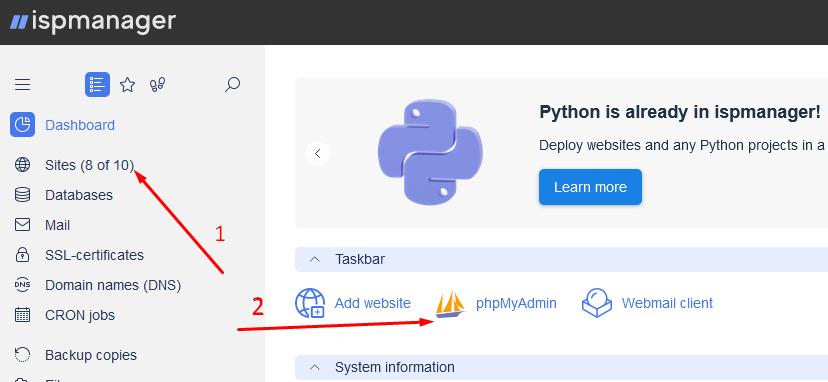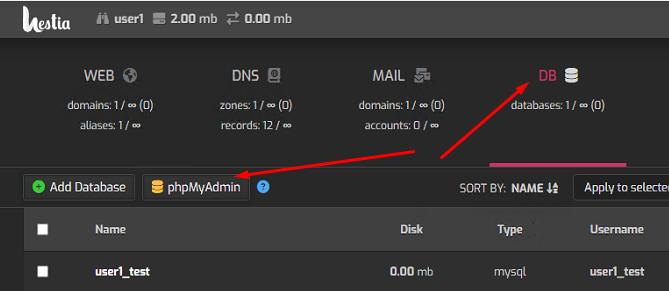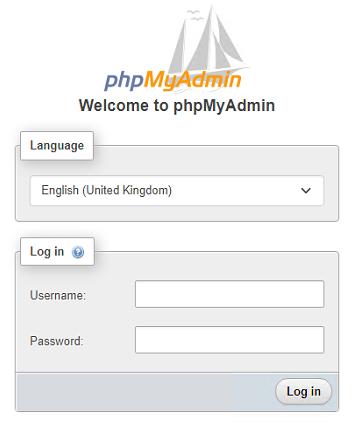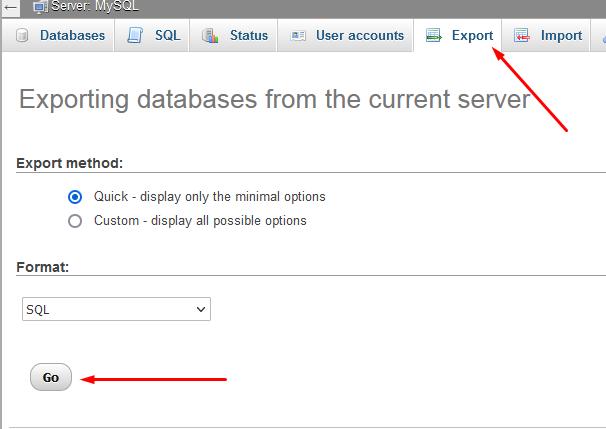Using phpMyAdmin when importing and exporting databases.
Introduction.
phpMyAdmin is one of the most widely used MySQL database management tools. It provides a web interface that allows system administrators or general users to easily import and export data from databases. In this article, we'll look at how to use phpMyAdmin to perform these tasks on various control panels such as ISPmanager, cPanel, VestaCP, and HestiaCP.
Go to phpMyAdmin in different panels
Below are examples of using phpMyAdmin to import/export databases on various control panels:
1. ISPmanager: Log in to the ISPmanager 6 control panel. On the main page, click phpMyAdmin.
 In ISPmanager 5 and find the "Databases" section on the left. Then select the desired database and click on the "phpMyAdmin" or "Database Web Interface" button.
In ISPmanager 5 and find the "Databases" section on the left. Then select the desired database and click on the "phpMyAdmin" or "Database Web Interface" button.

2. cPanel: After logging into cPanel, scroll down to the "Databases" section and look for the "phpMyAdmin" icon. Click on it to open phpMyAdmin.

3. VestaCP: Log in to the VestaCP control panel and find the "Databases" section. In this section, select the desired database and click on the "phpMyAdmin" link.

4. HestiaCP: After logging in to HestiaCP, log in as a user with a database, find the "Databases" section and select the desired database. Clicking on the "phpMyAdmin" button next to the selected database redirects to the page with http://IP/phpmyadmin, but the page at this link in the HestiaCP panel is blocked and unavailable: "Page Not Found". You need to go manually through your domain: http://you.domain.com/phpmyadmin/

Importing databases in phpMyAdmin
Importing databases is the process of restoring a database backup in .sql or .zip format to your system. To log into phpMyAdmin, you must specify the database username and password for this user.

In phpMyAdmin, select the database and go to the "Import" tab. Click on the "Browse" button and select the database backup file, then click "Run".

Database export in phpMyAdmin
Export databases allows you to create database backups in .sql or .zip format for later restoration. Follow the same steps for your control panel from the previous paragraphs to login to phpMyAdmin.

In phpMyAdmin select on the left the desired database you want to export and on the right above go to the "Export" tab. Select the desired export options and click on the "Run" button.
Results
phpMyAdmin is a powerful tool for importing and exporting MySQL databases. Regardless of the control panel you use, you can easily restore database backups or create them for transfer to another server. Using phpMyAdmin greatly simplifies the database management process and allows administrators to work efficiently with data. If the process was not completed completely during import-export via phpMyAdmin and/or an error occurred, it may have been stopped due to large database timeouts. In this case, import-export of large databases (from 1 GB and more) is recommended to be performed through the console.
It is important to remember that data security is a priority. Make sure your database backups are stored securely on an optional external FTP storage and are only accessible by authorized individuals. It is also recommended that you back up your databases regularly to minimize potential data loss.
Take advantage of the power of phpMyAdmin in your control panel and simplify the process of importing and exporting your project databases.

